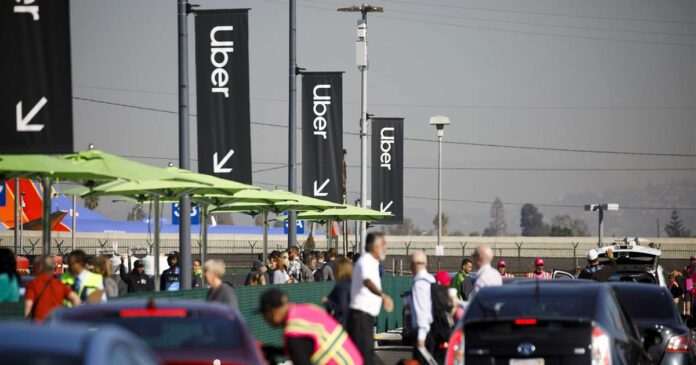OAKLAND, Calif. — On Thursday, Uber expanded the number of California cities where drivers can set their own rates as a function of the company’s price “multiplier” — used in Uber’s so-called “surge” pricing. The move builds on a pricing experiment that began in January in Sacramento, Santa Barbara and Palm Springs.
Under the new plan, which was announced late last month, San Francisco — including surrounding cities and counties — Modesto, Santa Barbara and San Luis Obispo were added.
Previously, drivers had no ability to set their own rates, which was one of the primary critiques of proponents of AB5, the state law that took effect at the beginning of the year.
The law attempts to ensure that so-called gig economy workers are considered employees rather than independent contractors. Under state labor law, employees are eligible for consideration benefits, including workers’ compensation, unemployment, unionization rights and more. Numerous companies including Uber save millions annually by avoiding such financial costs.
In a response to emailed questions, Uber spokesman Matthew Wing did not deny that the company’s expansion of pricing flexibility is in response to AB5.
“The reality is the overwhelming majority of drivers have said in survey after survey — including one conducted last month — that they prefer working independently,” he wrote, linking to a June survey that Uber commissioned. However, based on the survey’s methodology, it does not appear to have been representative of a truly random sample of California drivers.
Legal experts say that the new pricing change is unlikely to convince a court that AB5 does not apply to Uber.
Byers Market Newsletter
Get breaking news and insider analysis on the rapidly changing world of media and technology right to your inbox.
“Uber’s latest attempts to pretend drivers are setting their own rates to circumvent AB5 are woefully deficient,” Assemblymember Lorena Gonzalez, (D-San Diego), the author of AB5, said in an email. “Uber drivers are employees and deserve a minimum wage, overtime, unemployment insurance and workers compensation.”The attorney general of California sued Uber and Lyft in early May, alleging that the companies are not in compliance with the law.
Mark Ankorn, a deputy attorney for the city of San Diego, which is also a party to the attorney general’s lawsuit, suggested that pricing modification is another way that Uber is trying to skirt the law.
“I would say that [Uber continues] to show great flexibility in modifying and adapting both their business model and the working relationship with their drivers — yet somehow refuse to put on that creative thinking cap to figure out how to provide flexibility to employees,” Ankorn told NBC News in a text message.
Uber, Lyft and other related companies have continued to resist AB5 through multiple channels, and are also spearheading a proposed law (Proposition 22) that would effectively create a gig worker carveout in AB5. California voters will decide on Proposition 22 in November.As recently as June 30, Uber, Lyft, and others filed a formal motion with the California Public Utilities Commission — the entity that licenses their operations — claiming that drivers are the “users” of these companies’ “platforms,” and as such are not actually “workers.”
Labor advocates argue that Uber maintains control over its drivers, and as such, should be considered their employer.
“When [Uber] experimented with [these prices changes] in Sacramento, drivers reported that this resulted in lower overall wages because the calculus that went into choosing a multiplier, pit them against one another,” Veena Dubal, a law professor at the University of California, Hastings, in San Francisco, said by email.
“It became a literal race to the bottom. The larger point here is one of control. Uber can put out this ‘feature’ today, and they can take it away tomorrow. As a practical matter, this is what makes them the employer,” she said.
William Gould, a law professor at Stanford University and a chairman of the National Labor Relations Board during the Clinton administration, said that even though Uber may be allowing drivers some flexibility, it doesn’t get the company fully out of AB5 territory.
“There’s not really an arm’s-length autonomy that you would expect if you were an independent contractor,” he said.
It’s not yet clear how drivers feel given how new this change is, Wing, the Uber spokesman, said by email.
“It’s still early in the process as we just made this available statewide today,” he wrote. “The Rideshare Guy — a blog run by an Uber driver — recently did a post which included their thoughts and reactions from a local driver.”
The author of that post, Jay Cradeur, wrote that he wasn’t fully convinced that the change would be beneficial to drivers.
“My concern remains that this new feature will ultimately lead to a race to the bottom,” Cradeur wrote. “Those drivers who are charging 2X and not getting as many rides will eventually lower their rates so they can earn more revenue.”
